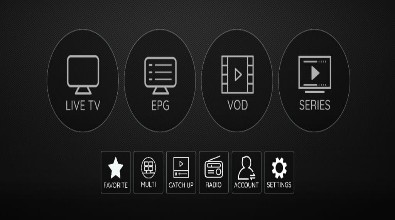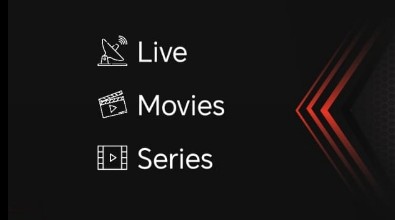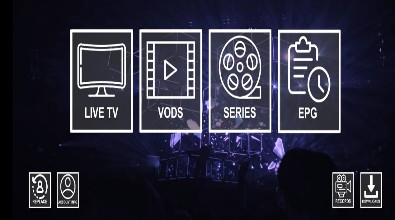Forex : Strategies for Success
The foreign exchange market, or forex, is the world’s largest financial market. It’s a decentralized marketplace where currencies are traded, and it offers a unique opportunity for investors and traders to profit from currency fluctuations. In this comprehensive guide, we will delve into the fundamentals of forex trading, various strategies, risk management, and tips for success.
What Is Forex Trading
Forex trading involves buying one currency while simultaneously selling another. Currencies are traded in pairs, such as the EUR/USD (Euro/US Dollar) or GBP/JPY (British Pound/Japanese Yen). The exchange rate between these two currencies reflects their relative value.
Market Participants
Forex trading is accessible to various participants:
- Retail Traders: Individuals who trade from their personal computers or mobile devices.
- Institutional Traders: Large financial institutions, banks, and hedge funds.
- Central Banks: National central banks influence exchange rates and may intervene to stabilize their domestic currency.
- Market Makers: Financial firms that provide liquidity to the market. Started in Forex Trading
Currency pairs are categorized into three groups:
These pairs involve major world currencies, such as EUR/USD, GBP/USD, and USD/JPY.
- Minor Pairs: They include currencies from smaller economies, like EUR/JPY and GBP/AUD.
Bid and Ask Prices
The bid price is the highest price a buyer is willing to pay for a currency pair, while the ask price is the lowest price a seller is willing to accept. The difference between the bid and ask prices is known as the spread.
Technical Analysis
Technical analysis involves the study of historical price charts and the use of various technical indicators to predict future price movements. Common indicators include moving averages, Relative Strength Index (RSI), and the Moving Average Convergence Divergence (MACD).
Fundamental Analysis
Fundamental analysis considers economic and geopolitical factors that influence currency values. It involves monitoring economic indicators like Gross Domestic Product (GDP), inflation rates, and interest rates, as well as analyzing political developments and news events.
Sentiment Analysis
Sentiment analysis assesses market sentiment and emotional factors that can impact trading decisions. Tools like the Commitment of Traders (COT) report track the positions of major market participants.
Risk Management in Forex Trading
Leverage
Leverage allows traders to control a larger position with a relatively small amount of capital. While it can amplify profits, it also increases the potential for losses, making effective risk management critical.
Stop-Loss Orders
A stop-loss order is a predetermined price at which a trade will automatically be closed to limit potential losses.
Take-Profit Orders
Take-profit orders specify a price at which a trade will automatically close to secure profits.
Trading Psychology
Emotions can significantly impact trading decisions. Successful traders maintain discipline, control emotions, and adhere to a well-defined trading plan. Common psychological challenges include fear, greed, and overtrading.
Choosing a Forex Broker
Selecting a reputable forex broker is essential. Consider factors such as regulation, spreads, execution speed, available trading platforms, and customer support.
To start trading forex, you need to open an account with a broker. This typically involves providing personal information, verifying your identity, and depositing funds.
Developing a Trading Plan
A trading plan outlines your trading goals, strategies, risk management rules, and criteria for entering and exiting trades. It serves as a blueprint for your trading activities.
Demo Trading
Before risking real capital, practice trading with a demo account to become familiar with the trading platform and test your strategies.
When transitioning to live trading, start with a small trading account and gradually increase your exposure as you gain experience.
Common Trading Mistakes to Avoid
Avoid these common trading mistakes:
- Lack of Discipline:Trading without a plan or allowing emotions to dictate your decisions.
- Overtrading: Opening too many positions or risking too much capital on a single trade.
- Ignoring Risk Management:Failing to set stop-loss orders or take-profit levels.
- Revenge Trading: Trying to recover losses by immediately making new trades.
Staying Informed
Stay updated on economic news, events, and market sentiment to make informed trading decisions. Economic calendars and financial news sources are valuable tools.
Conclusion
Forex trading is a dynamic and potentially profitable endeavor, but it’s not without risks. Success in forex trading requires knowledge, discipline, and a well-thought-out approach. Whether you’re a seasoned trader or just getting started, continuous education and discipline are essential for long-term success.
This comprehensive guide provides a strong foundation to begin your forex trading journey. Remember that practice, learning from your mistakes, and adapting your strategies are essential for progress. With the right mindset and dedication, you can navigate the dynamic world of forex trading with confidence.
PART 3
FOREX TECHNIQUE
THE ART OF FOREX TRADING
~ To succeed in forex trading, having a well-thought-out strategy is essential. One such strategy that has proven to be effective over the years is the Moving Average Crossover Strategy.
UNDERSTAND MOVING AVERAGES
~In forex trading, a moving average is a statistical calculation used to analyze data points over a certain period. It smoothens out price data to create a single flowing line, making it easier to identify trends.
~A moving average is essentially a lagging indicator that can help traders identify the direction of a trend or potential reversals. There are several types of moving averages, including simple moving averages (SMA), exponential moving averages (EMA), and weighted moving averages. The Moving Average Crossover Strategy primarily uses the SMA.
MOVING AVERAGE CROSS-OVER STRATEGY
The Moving Average Crossover Strategy is based on the interaction between two moving averages :
1• Short-term moving average
2• Long-term moving average
MOSTLY , traders use the 50-period and 200-period moving averages. Here’s how it works:
1•IDENTIFY THE MOVING AVERAGE :
~Set up your forex chart and add the 50-period and 200-period moving averages.
2•LOOK FOR CROSS-OVERS :
~ Pay attention to where these two moving averages cross each other. When the 50-period moving average crosses above the 200-period moving average, it’s considered a “Golden Cross,” indicating a bullish trend. Conversely, when the 50-period moving average crosses below the 200-period moving average, it’s a “Death Cross,” signaling a bearish trend.
3•CONFIRM THE TREND :
~ To ensure the reliability of the signal, look for other indicators and use fundamental analysis to confirm the direction of the market.
4•PLACE YOUR TRADES :
~Based on the crossover signal and other confirmations, decide whether to enter a long (buy) or short (sell) position.
SOME ADVANTAGES OF THE MOVING AVERAGE CROSS-OVER STRATEGY :
- TREND IDENTIFICATION :
~ The crossover signals help traders identify the direction of the trend, which is crucial in forex trading.
- SIMPLICITY :
~This strategy is easy to understand and implement, making it suitable for traders of all experience levels.
- LONG TERM PERSPECTIVE :
~ The use of both short-term and long-term moving averages provides a holistic view of the market.
- RISK MANAGEMENT :
~By using stop-loss orders and take-profit levels, traders can effectively manage their risk.
CHALLENGES & LIMITATIONS
~Following are challenges and limitations which you have to understand :-
- LAGGING INDICATOR :
~Moving averages are lagging indicators, meaning they are based on past price data. This can result in delayed signals, which might lead to missed opportunities or false signals in volatile markets.
- NOT FOOLPROOF :
~No strategy is foolproof, and the Moving Average Crossover Strategy is no exception. It should be used in conjunction with other technical and fundamental analysis tools.
- WHIPSAWS :
~In choppy or sideways markets, moving averages can generate multiple false signals or “whipsaws,” which can be frustrating for traders.
TIPS FOR SUCCESSFUL IMPLEMENTATION
- STAY INFORMED :
~Keep yourself updated on economic events and news that may impact currency movements.
- COMBINE WITH OTHER INDICATORS :
~While the Moving Average Crossover Strategy is powerful on its own, combining it with other technical indicators can improve the accuracy of your trades.
- RISK MANAGEMENT :
~Always use proper risk management techniques, such as setting stop-loss and take-profit orders to protect your capital.
- BACK TESTING :
~Before using the Moving Average Crossover Strategy in real trading, it’s essential to backtest it with historical data to ensure it aligns with your trading goals.
§CONCLUDING HERE AS :-
~Successful forex trading requires a combination of knowledge, strategy, and discipline. Whether you’re a novice or an experienced trader, the Moving Average Crossover Strategy can be a valuable addition to your trading arsenal.
~Its simplicity and effectiveness in identifying trends make it a popular choice. However, like any strategy, it’s essential to approach it with caution and always consider risk management.
In the world of forex, where currency values are in constant flux, if you master this moving average cross over strategy its a win on win strategy for you you can conquey forex world with you unique way of trading using this strategy.
Downlaod













